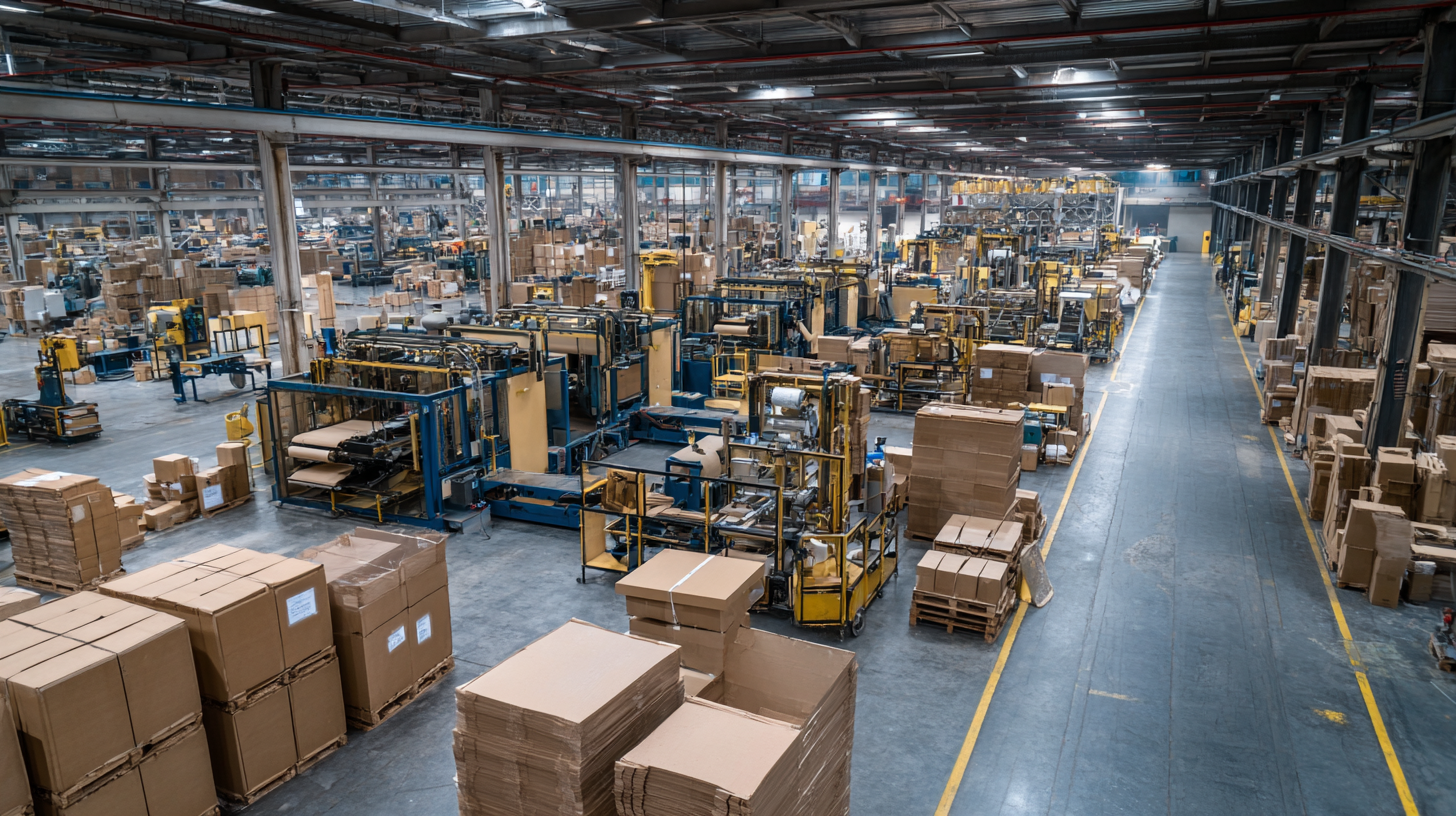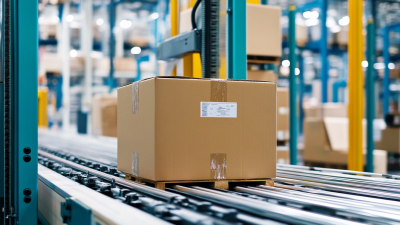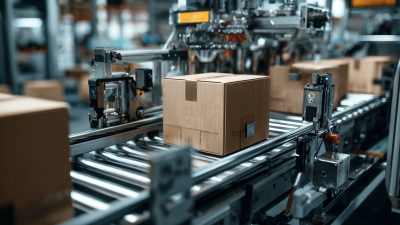Call for Price: 0086-15515573212
In today's fast-paced packaging industry, efficiency is paramount, and the use of advanced technologies is essential to meet growing consumer demands. A Box Wrapping Machine has emerged as a crucial asset for businesses aiming to streamline their packaging process.
 According to a recent report by Smithers Pira, the global packaging machinery market is projected to reach $50 billion by 2026, with automated solutions like box wrapping systems driving significant growth. These machines not only enhance productivity but also minimize material waste and labor costs, making them an invaluable tool for manufacturers.
By adopting box wrapping technology, companies can significantly boost their operational efficiency, while also ensuring consistent quality and presentation, key factors in maintaining competitive advantage in the market.
According to a recent report by Smithers Pira, the global packaging machinery market is projected to reach $50 billion by 2026, with automated solutions like box wrapping systems driving significant growth. These machines not only enhance productivity but also minimize material waste and labor costs, making them an invaluable tool for manufacturers.
By adopting box wrapping technology, companies can significantly boost their operational efficiency, while also ensuring consistent quality and presentation, key factors in maintaining competitive advantage in the market.
Box wrapping machines are integral to modern packaging processes, offering a blend of efficiency and precision that manual methods cannot match. Understanding the basics of these machines can significantly enhance your packaging operation. Primarily, box wrapping machines operate by folding and sealing packaging materials around products, ensuring they are securely bundled for storage or transport. This process not only speeds up production but also minimizes wastage and reduces labor costs.
By familiarizing yourself with different types of box wrapping machines, such as semi-automated and fully automated options, you can make informed decisions based on your specific needs. These machines typically come equipped with features such as adjustable tension controls and configurable settings for various box sizes, enhancing their versatility. Additionally, recognizing the importance of maintenance routines and operator training can lead to improved output and fewer technical issues.
Embracing these technologies fundamentally transforms the packaging landscape, making it essential for businesses aiming to stay competitive in a fast-paced market.
In the competitive landscape of packaging, optimizing efficiency with box wrapping machines is essential for streamlining operations.
According to a report by Market Research Future, the global packaging machinery market is anticipated to grow by 3.5% annually over the next five years, highlighting the increasing importance of technology in enhancing productivity.
Key features of modern box wrapping machines contribute significantly to this efficiency boost. For instance, automated wrapping systems with adjustable speeds allow for a tailored wrapping process that
can accommodate various box sizes, reducing manual labor and accelerating throughput.
Additionally, integrating advanced sensors and smart technology can provide real-time monitoring and analytics, ensuring that any issues are swiftly addressed to minimize downtime.
A study by Smithers Pira revealed that companies utilizing automated packaging systems reported a 30% increase in operational efficiency.
This underscores the necessity of choosing machines equipped with user-friendly interfaces and high compatibility with existing packaging lines to maintain workflow continuity.
By focusing on these critical features, businesses can substantially enhance their wrapping processes, leading to improved productivity and reduced operational costs.
When selecting the right box wrapping machine for your packaging needs, consider the specific requirements of your operations. Start by assessing the types of products you will be wrapping, as this will influence the size and design of the machine. Understand the packaging materials you plan to use, whether it’s cardboard, plastic, or a specialized film, as the machine must be compatible with your chosen materials. Additionally, evaluate the volume of products you need to wrap daily to determine the machine's output capabilities.

Next, analyze the features that different models offer. Look for machines with adjustable settings for speed and wrapping tension, as these can enhance efficiency and ensure consistent packaging quality. Automated options may provide considerable time savings, while machines with easy maintenance features can reduce downtime. Lastly, consider the overall cost of ownership, including initial investment, maintenance, and operational costs, to make a well-informed decision that aligns with your budget and production goals.
Maintaining box wrapping machines is crucial for ensuring their longevity and optimal performance in any packaging process. Regular maintenance practices such as routine inspections and cleaning can significantly reduce wear and tear. Operators should set a schedule for checking critical components, like belts, motors, and sensors, to identify any signs of deterioration early. Keeping these machines clean not only enhances their performance but also prevents contamination of packaged products, ensuring quality control.

Another best practice is to invest in operator training. Well-trained staff will not only operate the machines efficiently but also recognize issues quickly. This proactive approach minimizes downtime caused by machine malfunctions. Additionally, utilizing manufacturer guidelines for maintenance and adjustments guarantees that the machines function at peak efficiency. By combining routine upkeep with informed operation, businesses can maximize the lifespan of their box wrapping machines, resulting in significant cost savings and improved productivity in their packaging operations.
Box wrapping machines are essential in modern packaging processes, designed to enhance efficiency and precision. However, like any machinery, they can encounter issues that disrupt operations. Common problems include inconsistent wrapping, misalignment, and jamming. Understanding these issues is crucial for maintaining a streamlined workflow.
Inconsistent wrapping often arises from incorrect machine settings or worn-out components. Regularly checking and calibrating the machine can prevent such occurrences. Misalignment can be addressed by ensuring that the boxes are properly fed into the machine, as even minor shifts can lead to wrapping errors. Jamming, a frequent frustration, can typically be mitigated through routine maintenance and careful monitoring of the wrapping materials used. By diagnosing these common troubles swiftly, operators can minimize downtime and ensure that the packaging process continues to run smoothly.
| Issue | Possible Causes | Solutions | Preventive Measures |
|---|---|---|---|
| Inconsistent Wrapping | Material thickness variability | Adjust material feed settings | Regular material quality checks |
| Machine Jamming | Incorrect alignment of boxes | Realign boxes and adjust guides | Routine maintenance on alignment systems |
| Poor Adhesive Bond | Low quality adhesive | Use higher quality adhesive | Test adhesives regularly |
| Speed Issues | Worn out components | Replace worn parts | Scheduled parts replacement |
| Inaccurate Sizing | Improper machine calibration | Recalibrate machine settings | Regular calibration checks |





